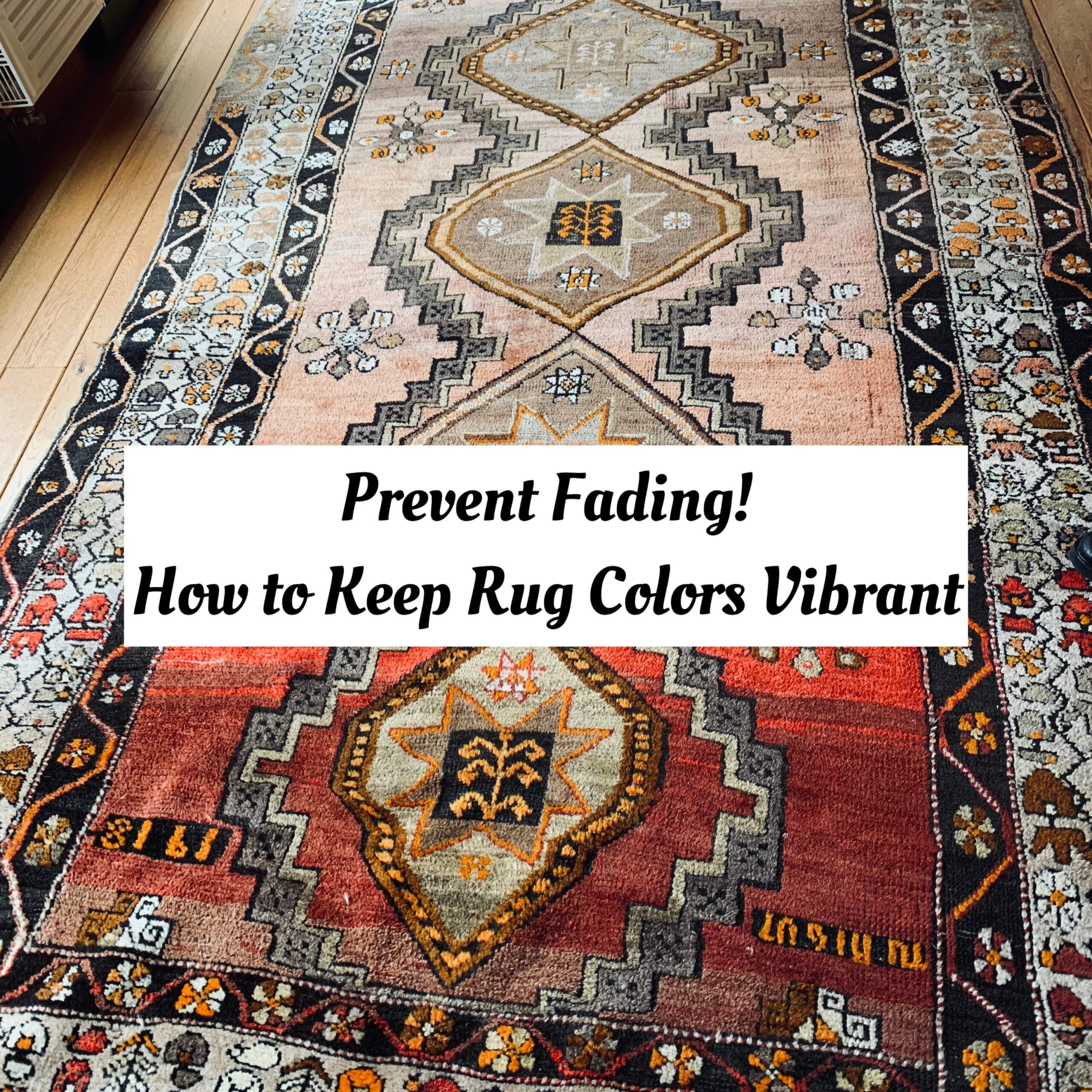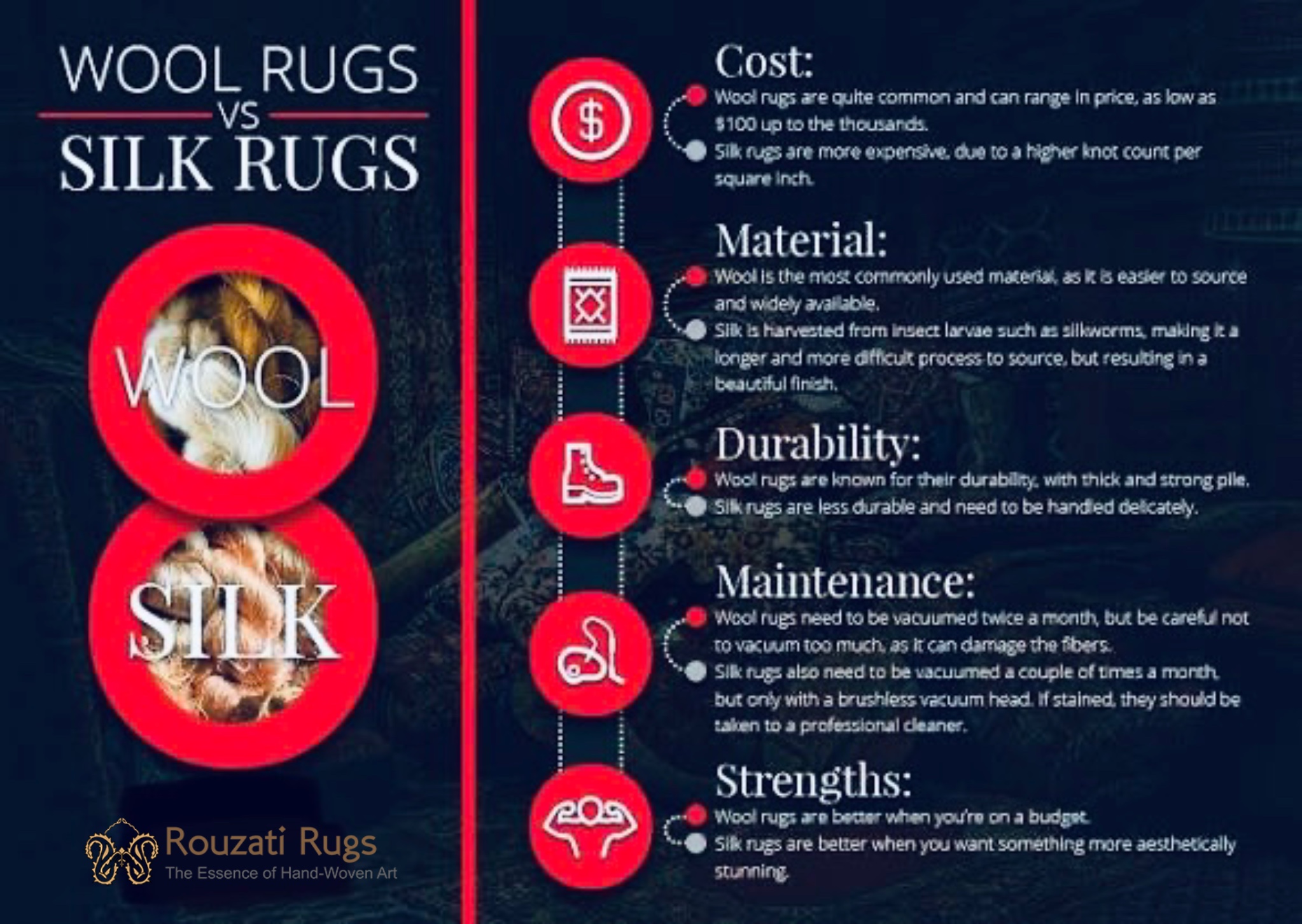How to Keep Rug Colors Vibrant & Prevent Fading | Chicago Style Guide
Keep Your Rugs Vibrant: A Chicago Homeowner’s Guide to Stopping Fading Before It Starts
Finding the perfect area rug is a moment of design magic. It’s often the color that speaks to you first—the deep, saturated indigo of a modern abstract or the rich, complex reds of a vintage Persian. This vibrant color is the soul of your rug and the anchor of your room.
That’s why it’s so heartbreaking to walk into your living room one day and realize that a patch of your rug looks, for lack of a better word, tired. The colors are muted, the vibrance is gone, and you’re a victim of one of the most common design issues: rug color fading.
Here in Chicago, our relationship with the sun is all or nothing. We cherish it, and our homes are designed to capture every ray, with large, beautiful windows being a prized feature in everything from a Lincoln Park greystone to a modern, south-facing apartment in the West Loop. But this cherished sunlight, along with intense indoor lighting, can be relentlessly harsh. Our local climate—with its intense UV and heat effect in the summer and dry indoor air in the winter—amplifies the damage, causing textiles to fade and age prematurely.
The good news is that preventing sunlight damage rugs is not about living in a dark cave. It’s about smart, design-driven prevention. This guide will show you how to keep rug colors vibrant using professional strategies that protect your investment and enhance your home’s style.

-
Designer Prevention Tips: It Starts with Smart Placement
The most effective way to prevent rug fading is to control your rug’s environment. This is where interior design and preservation meet.
Strategic Placement is Key
That brilliant “sun spot” in your living room—the one that streams in from direct south-facing windows—is the absolute worst place for a valuable, color-rich rug. If you have a priceless silk rug or a hand-knotted piece with deep, natural dyes, its placement must be a primary consideration. Try to position your most valuable rugs in areas that receive indirect light, such as a northern-facing room or a seating area shielded from the window’s direct path.
This doesn’t mean you have to compromise your layout. It just means you need to be strategic. For a full breakdown of how to position your rug correctly, read our complete Rug Placement: A Designer’s Guide to Layout and Size.
Embrace Stylish Window Treatments Your windows are the source of the problem, so they are also the source of the solution.
- Sheer Curtains: This is a designer’s top choice. Sheer, high-quality linen or voile curtains are a brilliant stylistic element that adds softness, texture, and height to a room. More importantly, they diffuse harsh UV rays without blocking the beautiful, natural light. The light is still bright, but it’s no longer a focused, damaging beam.
- UV-Protective Window Film: This is the invisible solution and a must-have for modern Chicago homes with floor-to-ceiling windows. High-quality UV film is professionally applied directly to the glass and can block up to 99% of harmful ultraviolet rays, the primary culprit of fading. Your view is completely unobstructed, your room stays bright, but your rugs, hardwood floors, and upholstered furniture are all protected.
- Avoid Heat Reflection: Be mindful of your other surfaces. Placing a delicate silk rug on a very dark floor that gets direct sun can amplify damage. The dark floor absorbs and radiates heat, essentially “baking” the rug’s fibers from below while the sun hits it from above.
-
Material Matters: Why Some Rugs Fade Faster
Not all rugs are created equal in the fight against fading. How a rug will age is directly tied to its fiber type and dye chemistry.
The Fiber: Wool vs. Silk vs. Synthetic
- Wool: Wool is the champion of fade resistance. The fiber’s natural, scaly structure (like human hair) is incredibly complex. Dye penetrates deep into the core of the fiber, making the color part of the wool itself. This structure also refracts light, which helps it resist fading from UV rays. This is why wool is one of the best choices for a room that gets moderate sun.
- Silk: Silk is prized for its incredible softness and luminous sheen. But that sheen comes from a very smooth, light-reflecting fiber. This structure makes it more delicate and susceptible to sun damage, which can make the fibers brittle and cause the color to fade. A pure silk rug should be treated like a fine piece of art and kept out of direct sunlight.
Synthetics: This is a broad category. Cheaper, low-quality synthetic dyes found in mass-produced rugs are highly susceptible to fading and will look bleached and washed-out very quickly. Conversely, high-quality solution-dyed synthetics (common in indoor/outdoor rugs) are virtually fade-proof, as the color is part of the fiber’s chemical makeup.
The Dyes: Natural vs. Synthetic
- Hand-Knotted Rugs (Natural Dyes): High-quality, hand-knotted rugs often use natural vegetable and insect dyes. These “living” colors don’t “fade” in the same way cheap synthetic dyes do. Instead, they patina. Over decades, the colors will gently mellow and soften, a desirable characteristic that adds to the rug’s antique value and beauty.
- Synthetic Dyes: This is a broad category. Cheaper, low-quality synthetic dyes found in mass-produced rugs are highly susceptible to fading and will look bleached and washed-out very quickly. Conversely, high-quality solution-dyed synthetics (common in indoor/outdoor rugs) are virtually fade-proof, as the color is part of the fiber’s chemical makeup.
The Chicago Humidity Impact on Natural Fibers Our Midwestern humidity swings are tough on natural fibers. The humid summers can cause fibers to swell, while the bone-dry, forced-air-heated winters make them contract and become brittle. Brittle fibers are far more susceptible to breaking and sun stress. This is why material choice is so critical in our climate. For a deeper dive, explore our guide to the best rug materials and textures.
-
The Seasonal Care Routine to Preserve Your Palette
A simple, consistent maintenance routine is your final line of defense. This is how you ensure your rug ages gracefully and evenly.
Rotate Rugs Periodically This is the single most important maintenance tip to balance light exposure. You must rotate your rug 180 degrees at least once a year (twice a year is even better). Why? Because fading is most obvious when it’s uneven. We’ve all seen it: you move your sofa and find a bright, vibrant rectangle where that part of the rug was hidden from light, while the exposed section is pale. Rotating your rug ensures that any light exposure is distributed evenly, so the rug ages as a whole, cohesive piece.
Gentle Cleaning with Non-Reactive Organic Solutions Never use harsh chemical spot cleaners or bleaches on a high-quality area rug. These can chemically strip the dyes from the fibers, causing fading that is just as bad as sun damage. Blot spills immediately with a clean, white cloth and water. For deep-seated dirt, a professional cleaning is the only safe option. A proper hand-washing service that uses non-reactive organic solutions is designed to revive your rug’s colors, not strip them. Learn about our professional Chicago rug cleaning service to see how it’s done safely.
Maintain Humidity Balance to Preserve Color Pigment Just as extreme humidity changes are bad for the fiber, they are bad for the color pigment. The dryness of our winters can dehydrate the fibers, making colors appear dull and lifeless. Running a humidifier in the winter doesn’t just help your skin; it helps maintain the integrity and suppleness of your rug’s natural fibers, keeping the colors rich.
Click HERE to watch a video on rug maintenance!
Conclusion: Protect Your Investment with Smart Style
Your rug’s vibrant color is its voice. Protecting it is about more than just maintenance; it’s about smart design. By choosing the right materials for the right room, using window treatments as a style element, and committing to a simple rotation schedule, you can ensure your rug remains the beautiful, saturated centerpiece of your home for generations to come.
Feeling unsure about which rug material is right for your sunny Chicago living room? Let’s talk. Explore Rouzati’s design consultation in Chicago for vibrant rugs that resist fading year-round. Visit our Chicago-area rug store for a design consultation today.

